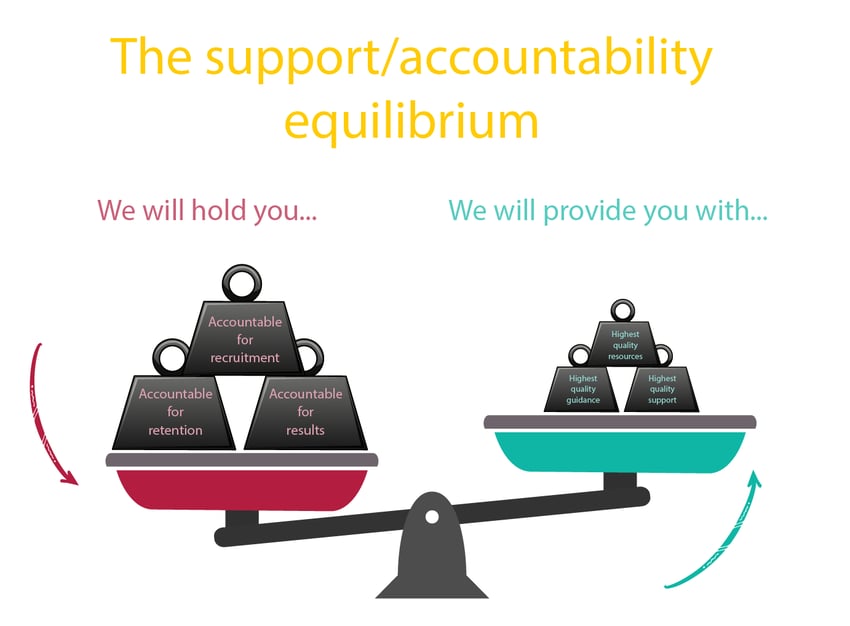Unscripted - addressing the gap in PE teacher training
Dear PE teachers,
I wish to take you back to an important moment in your working life, whether more distant or more recent. Think back to the first times you taught in a classroom or taught a qualification PE lesson. If you are a little like me, it will have been a GCSE PE lesson or similar that you taught for the first time – for me, it was in 1999.
I remember aspects of mine. I taught a lesson about the heart, in an oddly wooden classroom, on Centre Site at King Alfred’s School, Wantage Oxfordshire in my first year of teaching and as an NQT (ECT these days) in 1999. I say it was about “the heart” as I remember teaching something about that, but it could have been a wider lesson on the CV system or the effects of exercise or something of that nature. I’m not completely sure. But I do remember the feeling of “I should be good enough and I should be able to do this.” I was a teacher, I’d completed my PGCE. I had recently finished my degree, so I should have had the ammunition to “do a job”. But looking back now, I need to be candid and admit that I had little idea what I was doing.
If I zoom out further, I realise something else: I had very, very close to zero training in classroom PE teaching to that point. As mentioned, I had completed my PGCE in 1998 and 1999, and I believe I did it well. I was successful in my three placements, completed all my assignments to a good standard, taught tens, if not hundreds, of lessons and I even came out of the year with a post-grad qualification with distinction. But within those experiences, I received, by structure, absolutely no guidance on classroom PE teaching. There were influences such as working alongside the other PGCE students in various subjects, as well as being a co-tutor to three different tutor groups across my placements. I also got lucky in one of my host schools with the training manager for all the PGCE students being a PE teacher, John Evans. He was absolutely brilliant and he went out of his way to support me, specifically in classroom teaching. How fortunate! Despite the requirement for zero guidance on classroom teaching, I got some from John.
My PGCE was a very positive experience and I learned to be a PE teacher, but I absolutely did not, by structure, learn to be a qualification PE teacher or classroom PE teacher. All of my experiences to that end were in spite of my PGCE, not because of it.
It does make sense to some degree. Practical PE teaching needs to be studied and learned. I utterly agree with this and, in my own case, I need to honour the amazing work that my PGCE lead, Gareth Nutt did with my peers and I. He, with lots of support from others, guided us in the massive range of the National Curriculum and I will never forget, despite being a gamesy-PE teacher, how important Gareth made it that I learned to teach dance, gymnastics, athletics, swimming, etc. I really couldn’t ask for more from him or my course because I did learn deeply about essential skills.
Then, once in post in school, not only was I teaching GCSE PE as part of a team as mentioned above, but I was doing so, rightly, with the results of that teaching being highly scrutinised. Even back in 1999 and 2000, my first academic year of teaching, the scrutiny on exam results in examination PE was high. Perhaps not as high as today, but high nonetheless. I could even make a good argument that in many PE departments, the limiting factor for self-assessment, scrutiny and performance management is, in fact, exam results. What I mean by this is that a PE department could be doing many, many good things, but if those GCSE, BTEC or A-level recruitment, retention, and, especially, results are not good, then this is how the department as a whole will be judged.
Finally, I feel it would be fair to comment that, based on my own experiences of in-house CPD that I have received in hundreds of sessions across six different schools and colleges that I have worked at in the UK, there is little PE-specific (let alone classroom-PE-specific) CPD available in schools.
So let’s look at this:
1. I and many PE teachers receive no training on qualification PE teaching by structure.
2. I and many PE teachers teach qualification PE from the very start of our career.
3. The performance management of me and many PE teachers is based on qualification PE teaching.
4. PE departments that I and other PE teachers have managed have the potential to be limited in our external and internal judgments by qualification PE results, no matter how good our wider work is.
5. Teacher CPD rarely focuses on PE-specific skills, and even rarer on classroom-PE-specific skills.
It is for these reasons that I have titled this post “Unscripted”. This scenario, to me, feels like an unscripted type of environment where some colleagues will somehow find a way, but many, many others will stumble and even fall. I could have called the post: “Deep end! Sink or Swim” or, more cynically, “It’s time to sprint but first let’s snip those Achilles”. You can probably see why I went for “Unscripted”.
Now, before we go further and look at this more deeply, I want to be clear about something: I have absolutely no issue with accountability. In fact, I believe it is a fundamental ingredient in success in any system. However, as I have written many, many times before, accountability must be partnered with appropriate levels and types of support. I typically refer to this as the accountability-support equilibrium:

If PE teachers received this type of structure, I would not be writing this post. I would utterly support the need for even more accountability IF AND ONLY IF the support that goes with it is sufficient. But this is not our collective scenario. Our collective scenario is more like this:
 And in the most concerning cases, like this:
And in the most concerning cases, like this:
In scenarios like this one, PE teaching will feel unsustainable. In the worst cases, capable PE teachers will leave the profession or will sidetrack into other areas of school life.
A possible solution?
So, we have a challenge here. We have a network of PE teachers having to figure out how to do classroom PE teaching in most cases, rather than receiving specific guidance on it. Furthermore, we all recognise how important it is for PE teacher training, such as PGCE, to provide outstanding experiences in national curriculum PE teaching. I am certainly not arguing that this should change.Then, how do we go about solving this issue? How can we provide PE teachers and their managers with the opportunities they need to develop the skills of classroom PE teaching?
Although some teachers may already have had a tip-off or two, I am able to announce here that, from September 2025, The EverLearner PE Teacher Academy will become available. The EverLearner PE Teacher Academy is a series of tens –and later hundreds– of short courses for improving one’s own classroom PE teaching via TheEverLearner.com. You (presumably a PE teacher) will be able to take courses in the domains of:
- Curriculum
- Subject knowledge
- Pedagogy
- Cognitive science
- Curriculum management and assessment models
 If we reflect on what I wrote previously in this post, PE teachers may not get clear guidance about how to design Q&A sessions in classrooms through their PGCE, say, but now they can do so via The EverLearner PE Teacher Academy.
If we reflect on what I wrote previously in this post, PE teachers may not get clear guidance about how to design Q&A sessions in classrooms through their PGCE, say, but now they can do so via The EverLearner PE Teacher Academy.
Here is what you’ll be able to study from September 2025 (green courses will be available from 1st September 2025, yellow courses will follow shortly after):
| PE Curriculum |
PE Pedagogy | PE Subject Knowledge | PE Cognitive Science | Course Management |
| Intro to AQA GCSE PE P1 | Questioning Techniques 1 | Intro to Biomechanics | Intro to CS in your PE Classroom | Intro to assessment models |
| Intro to AQA GCSE PE P2 | Questioning Techniques 2 | Teaching Planes & Axes | Intro to Spacing & Interleaving | Assessment Models 1 |
| Intro to AQA GCSE NEA | Questioning Techniques 3 | Teaching Levers 1 | Spacing effect | Assessment Models 2 |
| Intro to OCR GCSE PE P1 | PE Classroom Structures | Teaching Levers 2 | Interleaving 1 | Course Design 1 |
| Intro to OCR GCSE PE P2 | Instruction 1 | Teaching the Skeletal System 1 | Interleaving 2 | Course Design 2 |
| Intro to OCR GCSE NEA | Instruction 2 | Teaching the Skeletal System 2 | Mastery Model | Course Design 3 |
| Intro to Edexcel GCSE PE P1 | Educational Imagery | Teaching the Skeletal System 3 | Intro to Remembering & Forgetting | Working with a specification |
| Intro to Edexcel GCSE PE P2 | PE Lesson Structures 1 | Teaching the Muscular System 1 | Memory 1 | Comparing exam boards for GCSE PE |
| Intro to Edexcel GCSE NEA | PE Lesson Structures 2 | Teaching the Muscular System 2 | Memory 2 | Comparing exam boards for A-level PE |
| Intro to AQA A-level PE P1 | Teaching the Muscular System 3 | Ebbinghaus's Forgetting Curve | ||
| Intro to AQA A-level PE P2 | Movement Analysis 1 | Intro to Learning Theories | ||
| Intro to AQA A-level NEA |
Movement Analysis 2 | Operant Conditioning | ||
| Intro to OCR A-level PE P1 | Cognitive Learning | |||
| Intro to OCR A-level PE P2 | Constructivism | |||
| Intro to OCR A-level PE P3 | ||||
| Intro to OCR A-level NEA |
||||
| Teaching A&P for AQA GCSE | ||||
| Teaching training for AQA GCSE |
The EverLearner PE Teacher Academy is a premium resource and we dearly hope that PE teachers and departments will seriously consider investing their time and resources into using it.
Thank you for reading.
James
Post-script: Imagine
I want to throw us all forward three years and imagine what the impact would be if, by then, thousands of PE teachers were studying with my team and I via The EverLearner PE Teacher Academy. What would classroom PE teaching look like? How would the feelings of classroom PE teachers change? What could happen if you, a PE teacher, or I, a PE teacher, were able to study from hundreds upon hundreds of bespoke courses for classroom PE teaching? What might happen?With this prompt in mind, I will leave you with my working mission for my career:

%20Text%20(Violet).png)



